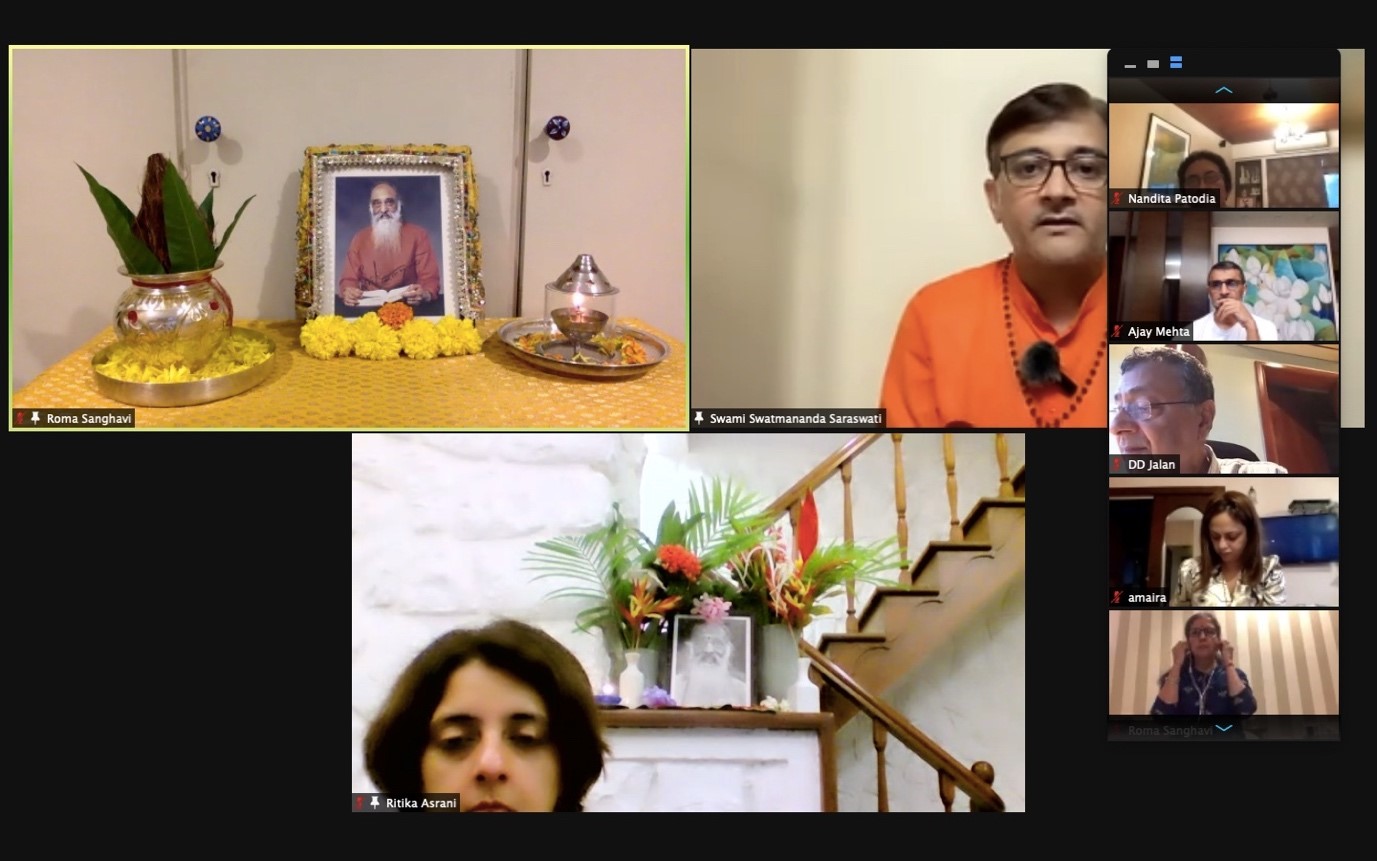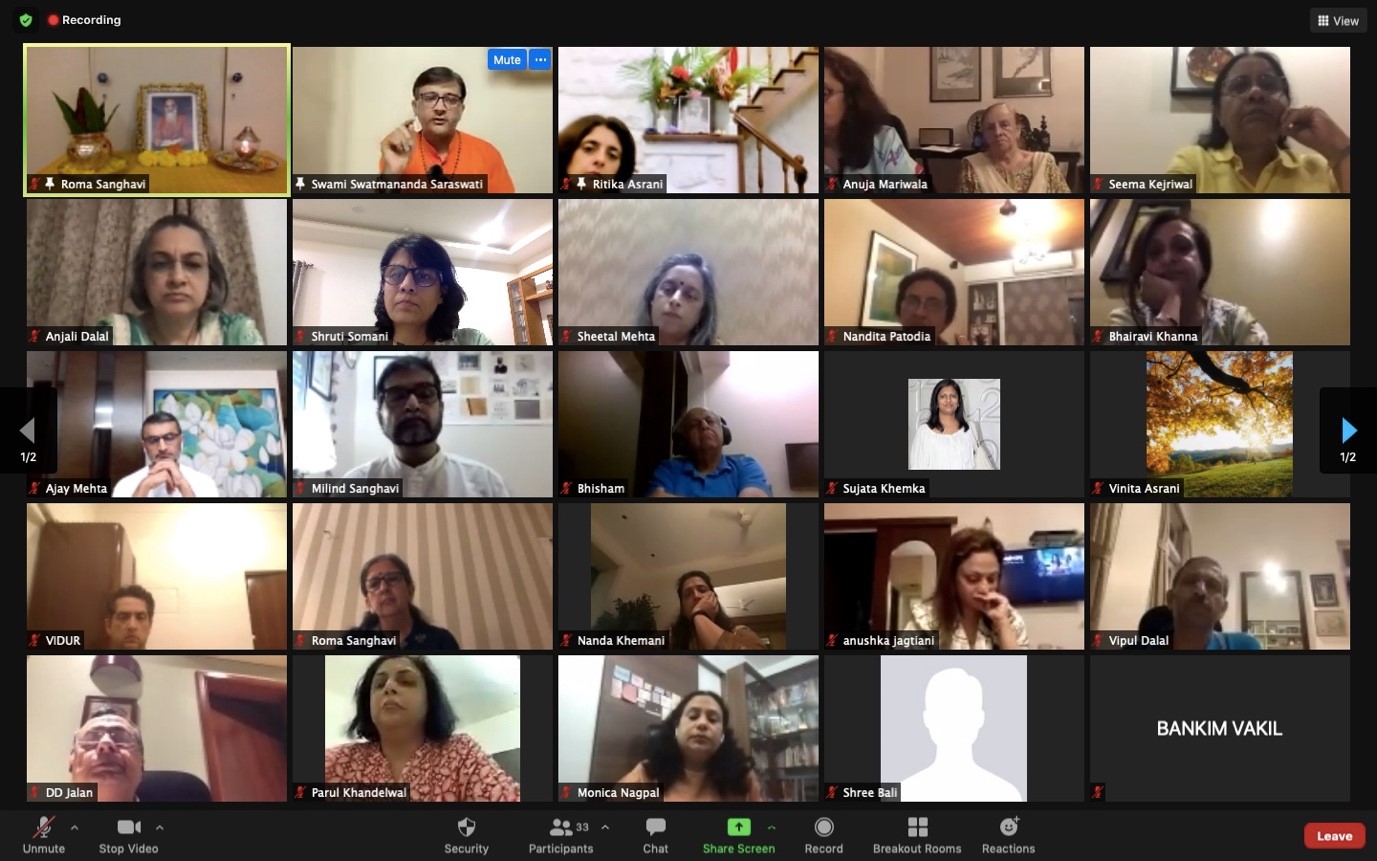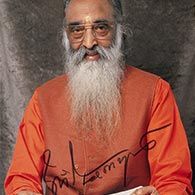Event: Swami Swatmananda ji's, Study class visit
Date: July 16, 7:00 pm.
Topic: How to Shravan and Mananam? How to intensify Vairagya?
Attendees: 34 from classes of Vinita Asrani, Geeta Kothari, Shruti Somani
The session began with the chanting of the Purnakumbha followed by other opening prayers chanted by various study group members. Swamiji began with the subject of Shravanam, the first aspect of Jnaana sadhana . Some key takeaways from it :
1. Attitude is important . Listen as if listening for the first time. Listen to determine the essence (take home points are secondary!).
2. Be emotionally present. As Bhakti engages emotions, while listening to Vedanta, invoke Shraddha in the Guru, in God and in the scriptures. Engage with the intellect, and also with memory. The last entails not only remembering what one is hearing of the subject, so as to make a clear line of thought , but also, to not remember painful experiences or sense pleasures as they create desire for enjoyment.
Mananam- Swamiji explained that the term comes from manute, meaning to reflect. In vedantic context, it means to reflect using logic to understand the import of the Mahavakyas. We were warned that logic can be used destructively as well, as it is a double edged sword. So, reflection is to be done based using scriptural logic as our compass. Reflection happens in 4 stages- (25% in each of them): , Listening (hence shravanam very important), one’s own reflection, discussion with co-students (hence our study classes as envisaged by Pujya Gurudev) and finally in time.
The 3 general steps in Mananam, Swamiji explained are:
Pratigna (statement), hetu (reasoning), and drishtaant (examples).
The process of reflection is very important as it is that which converts knowledge to conviction. An important aspect of removal of contrary knowledge is the willingness to let go. These two factors- lack of conviction and attachment to old habits need to be worked upon. Another important point is that all the logic is only supportive, in the path of Realisation of the Truth . It can never be proven. We must understand this clearly as God is beyond the precinct of logic. The transcendental leap is taken via nididhyaansan.
Vairagya, is the absence of craving, Swamiji explained. It gets intensified when Viveka is intensified. Through Viveka, one has to constantly remind oneself that ‘I am the witness’. Nitya-anitya Viveka is one aspect and dukh and dosha Buddhi is the other vital aspect. See the pain and limitation of the world and one’s objects of attachment ! See the problem of dependency because of raaga and dvesha. Keep reflecting. The Ramayana and Mahabharata teach us this. Raaga and dvesha make us weak, rigid, blind us and take us away from our duty. Thus, Swamiji tied up all the three topics, of Shravan, Manan and vairagya. Swamiji pointed out that selfless performance of duty with dedication to God, helps to increase vairagya.
Swamiji ended the session with reading a hard hitting paragraph from the book Vedanta Through Letters, Part I, written by Pujya Gurudev. After the QnA, the session ended with the chanting of the pledge, singing of the Chinmaya aarti and the recitation of the shanti mantra, by various class members.




